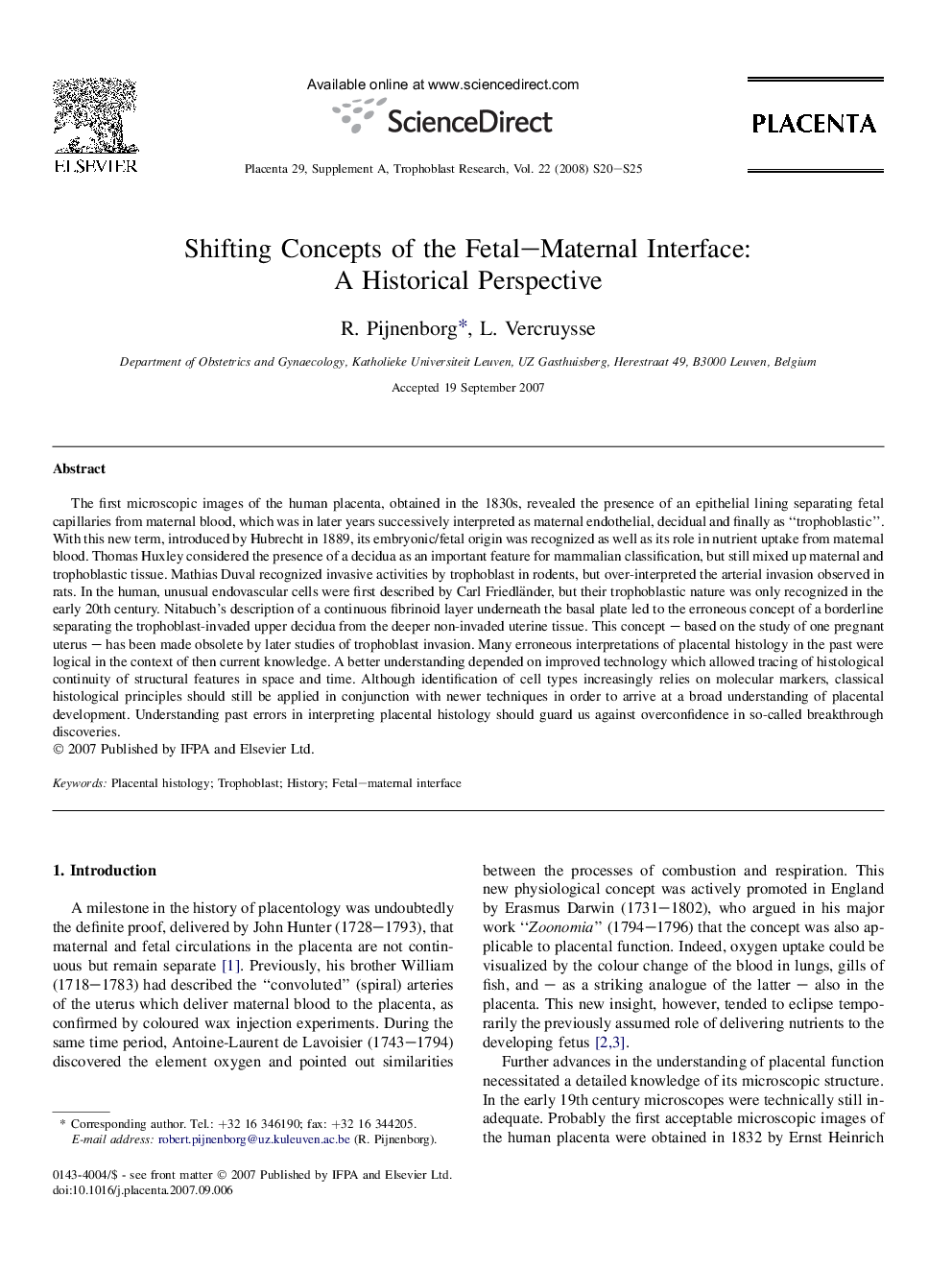| Article ID | Journal | Published Year | Pages | File Type |
|---|---|---|---|---|
| 2790342 | Placenta | 2008 | 6 Pages |
The first microscopic images of the human placenta, obtained in the 1830s, revealed the presence of an epithelial lining separating fetal capillaries from maternal blood, which was in later years successively interpreted as maternal endothelial, decidual and finally as “trophoblastic”. With this new term, introduced by Hubrecht in 1889, its embryonic/fetal origin was recognized as well as its role in nutrient uptake from maternal blood. Thomas Huxley considered the presence of a decidua as an important feature for mammalian classification, but still mixed up maternal and trophoblastic tissue. Mathias Duval recognized invasive activities by trophoblast in rodents, but over-interpreted the arterial invasion observed in rats. In the human, unusual endovascular cells were first described by Carl Friedländer, but their trophoblastic nature was only recognized in the early 20th century. Nitabuch's description of a continuous fibrinoid layer underneath the basal plate led to the erroneous concept of a borderline separating the trophoblast-invaded upper decidua from the deeper non-invaded uterine tissue. This concept – based on the study of one pregnant uterus – has been made obsolete by later studies of trophoblast invasion. Many erroneous interpretations of placental histology in the past were logical in the context of then current knowledge. A better understanding depended on improved technology which allowed tracing of histological continuity of structural features in space and time. Although identification of cell types increasingly relies on molecular markers, classical histological principles should still be applied in conjunction with newer techniques in order to arrive at a broad understanding of placental development. Understanding past errors in interpreting placental histology should guard us against overconfidence in so-called breakthrough discoveries.
